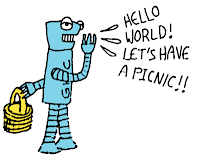Ahhhh…It’s March and Easter is around the corner. It’s on April 4th this year. Every year it changes due to religious calendars, but it always falls on a Sunday. During this month there will be several Easter egg hunts and other Easter activities for kids to Enjoy. I thought I’d write about some of our traditions and introduce some Easter English vocabulary as well. 
An Easter egg hunt is for kids of all ages. People put candy, coins or small presents in plastic eggs and then they hide them all over a park or garden and let kids find them. Last year I went to 4 huge Easter Egg hunts and my kids came home with loads and loads of plastic eggs and candy. Some people use dyed hard-boiled eggs for their Easter egg hunts, but this is less often because if you leave out the eggs too long in the sun, they could spoil and make you sick.
Dying eggs is a huge tradition. You can buy a kit with dye, stickers and other things to decorate your eggs with. The dye is in the form of a tablet and then you drop the tablet into water. After boiling your eggs, you can then dip them in the colored water. There are also plastic wraps you can put on your eggs that will shrink and fit completely around the egg when you dip the egg in water.
Let’s not forget about the Easter Bunny…. On the night before Easter Sunday when all of the children are sleeping, the Easter Bunny goes into the houses and leaves chocolate bunnies, marshmellow chicks, and other types of candy. Also, he may leave toys for the kids. He puts them in a Easter basket usually.
One of the songs that kids sing for “Easter is Here comes Peter Cotontail.” Below is a link to the lyrics and song. Enjoy!



